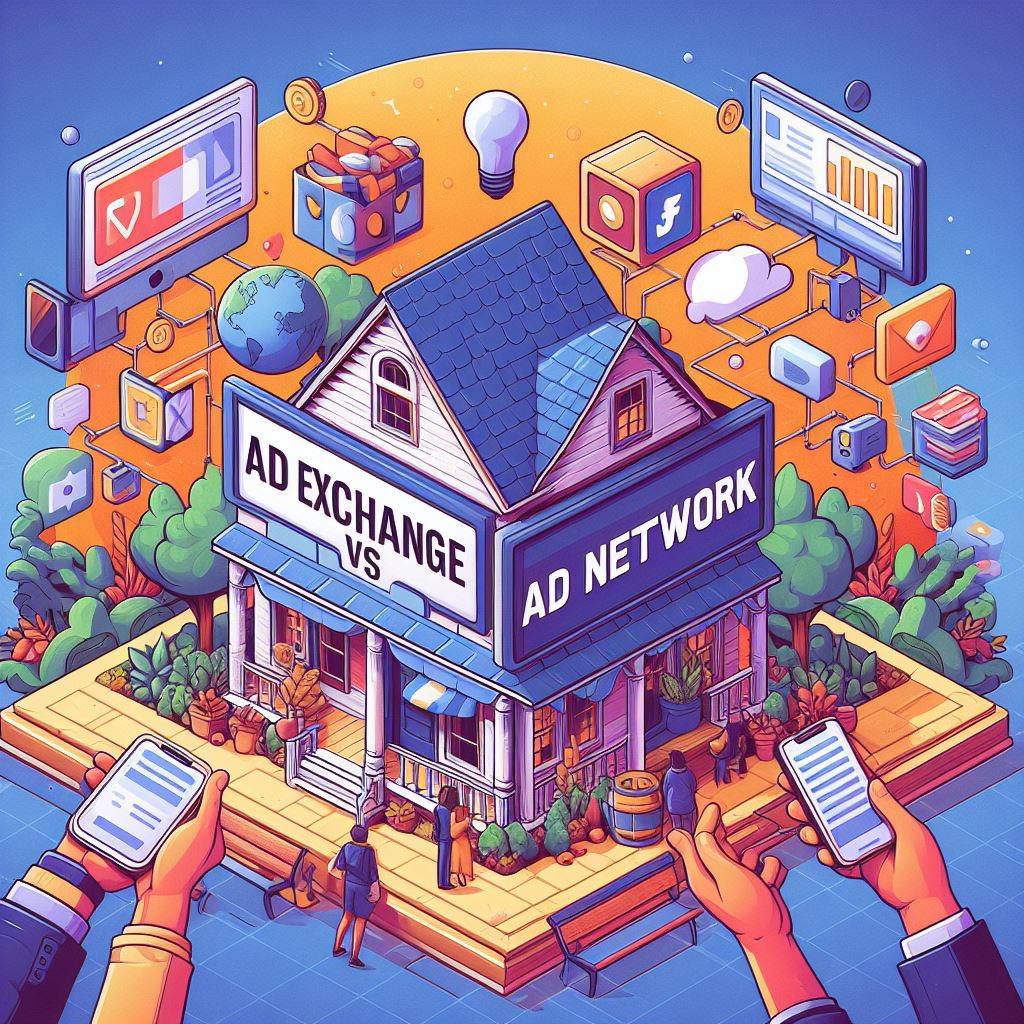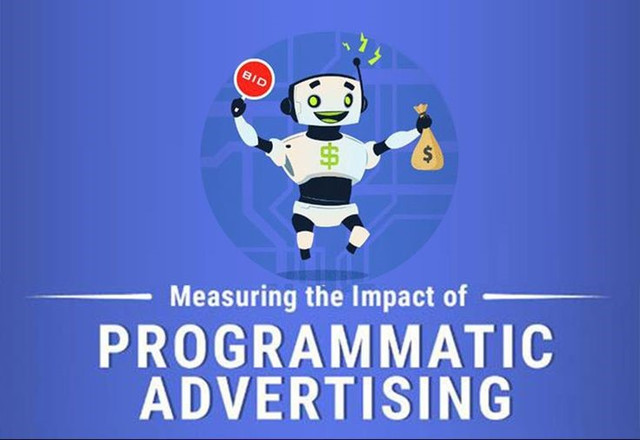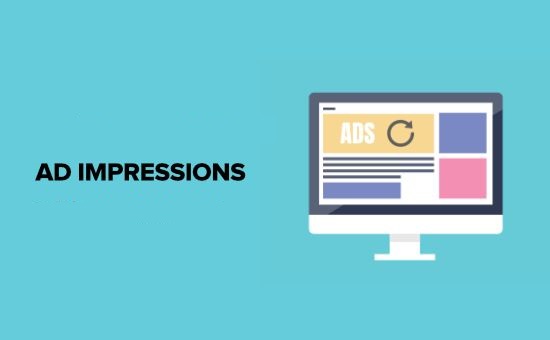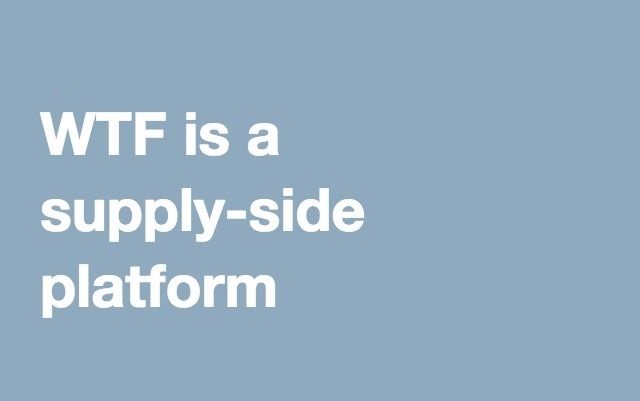The dynamics between ad exchange vs ad network will be discussed in this article and have significant implications for publishers looking to maximize revenues, like those that work with Bigfourth. As an industry leader in providing Google Ad Exchange and AdSense optimization services, Bigfourth relies on a deep understanding of the programmatic advertising ecosystem spanning both the buy and sell sides. Their team utilizes this expertise to strategically configure the right combination of ad networks and exchanges for publishers to optimize outcomes.
Introduction to ad exchange vs ad network

The programmatic advertising model has led to major advancements in how digital ads are bought and sold online. Within this model, two key components stand out – ad exchanges vs ad networks. While they sound quite similar and work together in the broader digital advertising ecosystem, there are some key differences between ad exchange vs ad network that publishers and advertisers need to understand when developing their online monetization strategies.
Ad exchanges act as centralized digital marketplaces where publishers and advertisers can directly buy and sell advertising inventory. The transactions happen in real-time through a bidding process known as real-time bidding (RTB).
On the other hand, ad networks aggregate ad inventory from publishers and package it for advertisers based on audience segmentation and targeting parameters. So ad networks act more as intermediaries between publishers and advertisers.
Both options help facilitate the automated selling and buying of ad impressions at scale across the internet. However, their underlying mechanisms and levels of transparency differ:
| Ad Exchange | Ad Network | |
| Transparency | High | Low |
| Pricing | Fluctuating based on RTB | Fixed premium prices |
| Inventory | All including unsold inventory | Only premium inventory |
While ad exchanges offer a transparent and open marketplace for buyers and sellers to transact directly, ad networks leverage their aggregation of inventory across publishers to optimize targeting and placements for advertisers.
In most cases, businesses leverage both ad exchange vs ad network as part of their overall programmatic advertising strategy to optimize outcomes for advertisers and monetization for publishers. The exact combination depends on their business goals.
Programmatic Advertising Model

As online advertising evolved from manual processes like negotiating insertion orders to automated selling and buying, the programmatic advertising model emerged. This model relies on technology and data to buy and sell ad inventory efficiently at scale.
At its core, programmatic advertising leverages user data, advanced algorithms, and real-time bidding (RTB) to match publishers’ ad inventory with relevant advertisers’ demand. This results in higher relevance for users, better returns for advertisers, and increased revenues for publishers.
Real-time bidding (RTB) transformed the digital advertising landscape enabling advertisers to bid for each individual ad impression as it becomes available on a publisher’s site. As soon as a user loads a web page, an auction kicks off behind the scenes connecting the publisher’s ad space with potential buyers.
Together, this ecosystem automates media buying and selling, delivers better matches between advertisers and audiences, and improves outcomes through features like:
- Automated Guaranteed
- Automated auction-based pricing
- Advanced audience segmentation
- Cross-device targeting
- Full transparency on placements
- Advanced reporting on performance
The table below summarizes the benefits of programmatic advertising for different stakeholders:
| Stakeholder | Main Benefits |
| Advertisers | – Precise targeting – Lower CPM rates – High transparency |
| Publishers | – Time savings – Increased yield – Reduced unsold inventory |
| Users | – More relevant ads – Better experience |
In 2022, over 80% of digital display ad dollars were transacted programmatically. As technologies like machine learning and ambient computing evolve, programmatic processes will become even more efficient and deliver greater value across the advertising ecosystem.
Real-time Bidding (RTB)

Real-time bidding (RTB) is an integral technology that powers the automated buying and selling of digital ads within the programmatic advertising ecosystem. It allows advertisers and publishers to transact each ad impression individually via a real-time auction.
Here is how the real-time bidding process typically works:
- A user visits a publisher’s website where ad space is available
- The publisher’s ad server identifies an opportunity to insert an ad per the user’s profile and context
- An auction request goes out to multiple demand-side platforms (DSPs) connected to that ad slot via the publisher’s supply-side platform (SSP)
- Each DSP analyzes the impression’s value based on the advertiser’s goals
- DSPs place automated dynamic bids for that impression
- The highest bid from DSPs wins the impression auction
- The winning advertiser’s ad is instantly displayed to the user
- The advertiser is charged only when the user interacts with the ad
This sequence happens in under 100 milliseconds giving RTB its “real-time” capabilities to process billions of ad auctions daily.
RTB brings several advantages including:
- Publishers get the highest market price for each of their ad impressions
- Advertisers reach their target audiences efficiently at scale
- More relevant ads lead to better experience for users
The metrics used to track RTB performance are:
| Metric | Definition |
| Bidding rate | % auctions receiving at least 1 bid |
| Fill rate | % auctions with successful bids |
| Avg. CPM | Average cost per 1000 ad impressions |
With forecasts predicting the RTB advertising market to keep growing over 20% annually, more advertisers and publishers will adopt automated buying and selling of inventory. This growth will be accelerated by consumer shifts to streaming, digital events, and newer online platforms.
Ad Impressions

In digital advertising, an ad impression refers to an instance of an ad being loaded and displayed to a user within a web page or app. Impressions are a key metric used for measuring ad performance and calculating costs for both publishers and advertisers.
Within the programmatic advertising ecosystem, ad servers track these ad impressions to enable the automated buying and selling between demand-side platforms (DSPs) and supply-side platforms (SSPs).
Real-time bidding (RTB) transforms impressions into valuable commodities that can be transacted instantly via auctions between advertisers wanting to reach specific users and publishers having access to those users. The value stems from attributes like:
- Context – Based on page content relevancy
- Placement – According to rank and visibility
- Audience – Depending on user profile and behavior
So not all impressions have equal value. Advertisers leverage demand-side platforms (DSPs) to set up campaigns targeting the most valuable impressions for their goals out of the billions available at any time.
Meanwhile, publishers utilize supply-side platforms (SSPs) to optimize yield and sell premium impressions at higher cost per thousand (CPM) rates. Various pricing models come into play:
- CPM – Cost based on impressions purchased
- CPC – Cost per click on the impressions
- CPA – Cost for user actions from impressions
With a single webpage having multiple places to put ads, publishers can have a large and growing inventory of impressions daily. The goals are balancing value across:
- Filling ad space – Ensuring no lost impressions
- Maximizing yield – Increasing average returns per impression
- Reducing latency – Maintaining site speed and user experience
This is why both programmatic exchanges and networks are leveraged to sell impressions most efficiently. As new platforms like streaming continue rising in usage, more ad impression inventory will need monetization at scale.
Demand-Side Platforms (DSPs)

In the digital advertising landscape, demand-side platforms (DSPs) are a vital technology used by advertisers and media agencies to programmatically purchase ad inventory from multiple sources including ad exchanges.
DSP solutions equip advertisers with automation, targeting, optimization and on a single platform to efficiently buy ads in a highly fragmented marketplace. Instead of negotiating with individual publishers in a complex and time-intensive process, DSPs streamline discovery, targeting analysis, bidding, audience data management and campaign reporting functionality.
The main capabilities offered by demand-side platforms include:
- Real-time bidding (RTB) – Algorithmic media buying from multiple networks
- Advanced audience segmentation – Based on interests, location, context etc
- Cross-channel activation – Managing search, display, video & social
- Unified campaign tracking – Performance dashboard across placements
- Inventory transparency – Controlling brand safety and ad quality
This enables advertisers and agencies to have greater control over their programmatic advertising initiatives using DSPs while saving significant amounts of time and effort.
DSPs seamlessly integrate with the other advertising platforms:
- Ad exchanges – For real-time buying from liquid marketplaces
- Publisher ad servers – For direct deals with specific partners
- Third-party data providers – For richer audience targeting
- Marketing analytics tools – For deeper performance insights
Leading demand-side platforms include Google’s Display & Video 360, The Trade Desk, Adobe Advertising Cloud, and Amazon DSP. As digital transformation accelerates across industries, DSP adoption will keep rising right alongside.
Global DSP spending is predicted to grow over 15% annually surpassing $35 billion by 2025 on the back of brands increasing their investments in data-driven personalized advertising. As the variety of digital platforms and touchpoints multiply, DSPs become that much more critical for managing programmatic ad campaigns holistically.
Supply-Side Platforms (SSPs)

On the publisher side of the digital advertising equation, supply-side platforms (SSPs) help website owners maximize the value of their advertising inventory. SSPs are integral technologies in the programmatic ecosystem enabling publishers to efficiently sell their available ad space.
The core functions of an SSP include:
- Making a publisher’s ad inventory available to demand sources
- Automating inventory management workflows
- Connecting to multiple ad exchanges
- Optimizing impression pricing in auctions
- Providing real-time performance analytics
Instead of publishers having to manage the entire ad monetization process manually by working individually with advertisers, networks, and exchanges, SSPs essentially centralize, automate and optimize much of that complexity.
SSPs integrate with a site’s ad server to get available impression and audience data that can be packaged to demand partners as inventory. The SSP ensures the publisher’s floors are met based on inventory value before completing the sale of ad impressions via real-time bidding.
Leading SSP partners include:
Publishers get access to demand from hundreds of networks, trading desks, and advertisers via a single SSP dashboard. This simplifies yield optimization based on dimensions like geography, formats, page types etc.
SSPs also provide transparency on key metrics:
- Sell-through rates
- Average CPMs
- Top performing platforms
- Fill rates
- Latency impact
As publishers aim to extract greater value from their site traffic to improve monetization, supply-side platforms will become even more critical pillars of their programmatic stack.
Ad Inventory

Ad inventory refers to the pool of ad spaces a publisher has available across their website or app to display ads to users. This inventory becomes the core commodity traded between advertisers and publishers in the digital advertising market.
As site traffic and number of ad slots grow, publishers accumulate more ad inventory that needs to be monetized effectively. Display ads, video ads, native ads, and mobile ads are popular inventory units traded based on user traffic volume and attributes.
With the automation enabled by programmatic advertising, publishers can sell their inventory at scale rather than striking individual deals with advertisers. Selling and buying happens in an automated fashion in real-time enabled by technology.
Real-time bidding (RTB) unlocks an efficient market dynamic allowing publishers to get the fair market value for each of their inventory units as advertisers bid for the access to their audiences. Different pricing models come into play:
- CPM: Cost per 1000 impressions
- CPC: Cost per click
- CPA: Cost per conversion
The platforms facilitating inventory transactions are:
- Ad exchanges: The marketplaces for auctioning inventory
- Supply-side platforms (SSPs): Publisher platforms to access demand
- Demand-side platforms (DSPs): Advertiser platforms to access supply
Ad exchange vs Ad network also play an important inventory aggregation role for publishers in programmatic ecosystem. Networks package inventory from multitudes of sites and mobile apps into pools catering to specific advertiser needs. Despite the wide reach, network buying has limitations like:
- Lower transparency on placement performance
- Higher platform fees reducing publisher yield
- Limited targeting and customization options
For large publishers, ad exchanges + programmatic guaranteed (PG) deals offer the best balance of price stability and value control over utilizing their ad inventory. The programmatic future will likely see more direct integrations between advertisers, agencies, and premium publishers with less intermediation.
Publisher Revenue

For publishers, website traffic and audience data have little value unless they can effectively monetize it to drive business growth. Converting visitors into revenue is vital for publishers to sustain operations and justify investments into content and infrastructure.
Leveraging different digital monetization models involves balancing factors like:
- Volume of impressions
- Ad unit standardization
- Fill rates
- Effective CPM rates
With programmatic advertising automating much of this complexity, publisher revenue potential can efficiently be maximized.
Real-time bidding (RTB) unlocks access to thousands of demand sources and segment-based targeting to yield higher returns per impression. As publishers accumulate quality ad inventory with site growth, programmatic selling ensures nothing goes unsold or undervalued.
Supply-side platforms (SSPs) enable publishers to automate impression pricing based on page attributes and audience. Instead of intensive manual optimization, algorithms crunch impression value data to price them based on historical performance.
Ad exchanges connect publisher inventories with the highest bidders out of all advertisers in the marketplace. This real-time auction environment drives up competition leading to higher cost per impression (CPM) rates.
Even ad networks can drive incremental revenues for publishers through:
- Increased fill rates
- International demand facilitating geo-targeted ads
- Specialized inventory packages attracting niche advertisers
Overall programmatic trading delivers superior outcomes by:
- Reducing dependence on manual ad sales operations
- Optimizing returns across global demand sources automatically
- Maximizing yield with data-based dynamic floor pricing
- Achieving scale and reducing unsold ad inventory
As digital engagement accelerates across platforms like video and mobile driving more impressions, programmatic models will be key to turning publisher traffic into revenue efficiently.
Transparency
Transparency has emerged as a pivotal issue as programmatic advertising aims to create an efficient marketplace connecting publishers and advertisers. Having clarity across the buying and selling chain enables better outcomes.
For advertisers, transparency spans insights like:
- Complete visibility on media buys
- Details on fees and markups
- Inventory quality verification
- Anti-fraud protections
- Brand safety controls
- Attribution modeling and multi-touch analysis
Without adequate transparency, advertisers risk dollars being wasted on invalid traffic, unsafe content placements, and intermediaries taking unaccounted cuts reducing campaign performance.
For publishers, key transparency aspects cover:
- Breakdown of demand partners and bid rates
- Granular analytics on fill rates and eCPMs
- Insights on advertiser categories spending
- Identification of high-value audience segments
- Measuring impact on page latency and site speed
Lack of transparency can leave publishers struggling to explain revenue delivery and site metrics variability while limiting the ability to optimize monetization programs.
Ad exchanges and supply-side platforms (SSPs) deliver transparency benefits like:
- Bid density analytics attributing spikes and declines
- Category and keyword-level domain ratings safeguarding brand image
- Invalid traffic deduction policies preserving inventory quality
Whereas ad networks often mask buyers and hide intermediary fees reducing financial clarity for sellers. As programmatic advertising matures, transparency will only grow in importance across:
| Parameter | Publisher Needs | Advertiser Needs |
| Inventory Quality | Malware tracking partner IAB content categories In-depth traffic analytics | Fraud filtering Brand safety controls Viewability tracking |
| Demand Analysis | Bid density tracking Bid landscape analytics Buyer type classifications | Auction type differentiation Bid range summary Competitor tracking |
| Fee Structures | Exchange, SSP, and network fees breakdown Markup amount insights Net rate reporting | Platform charges visibility Markup transparency Net CPM clarity |
As automation increases scale, only platforms ensuring transparency can build sustainable trust across buyers and sellers driving programmatic advertising’s future.
Bidding Process

The bidding process in programmatic advertising enables the buying and selling of ad impressions in an efficient automated fashion. Real-time bidding (RTB) has transformed inventory into liquid commodities traded instantly via supply and demand market dynamics.
In the digital ad ecosystem, there are two distinct bidding processes based on the transaction platform:
- Direct deals – Reservation based buying of fixed impression volumes based on pre-negotiated prices.
- Open auctions – Spot market buying of impressions via real-time bidding enabling dynamic pricing based on value.
While direct deals continue to dominate video and premium display spending, RTB is significantly rising as a share of display and mobile transactions. By 2024, over 80% of global digital display ad dollars are forecasted to transacted programmatically.
In the open auction environment, the bid processing workflow is:
- User visits a publisher page triggering an ad call
- Multiple exchanges bid request for the impression
- Advertiser DSPs analyze requests and return bid responses
- Winning bidder is selected and their ad served
Each bid response is algorithmically calculated based on parameters like:
- Publisher (Domain, geography, vertical)
- User (Context, behavior, demographics)
- Impression (Placement, device, format)
- Campaign goals (Platform, targeting rules, budgets)
RTB has unlocked tremendous efficiencies for both buyers and sellers by enabling automated impression-level transactions. For publishers, exchanges and SSPs provide transparency into:
- Bid rates across partners, advertisers and campaigns
- Win rates highlighting competitor dynamics
- Optimal price floors by impression variable
This arms publishers with data to optimize yield over time. On the flip side, advertisers gain more control over targeted reach and frequency caps driving better ROI.
As ad investments continue shifting towards more personalized and accountable media, programmatic bidding will become central to next-generation campaigns.
Ad Formats

In the digital advertising ecosystem, ad formats refer to the different types of advertising creative units that can be displayed on websites, mobile apps and other digital platforms. Determining what ad formats to support impacts monetization potential for publishers and campaign flexibility for advertisers.
Some popular ad formats include:
- Banner ads – Rectangular display units in standard IAB sizes
- Video ads – In-stream, out-stream, non-linear etc
- Native ads – Contently blended with on-page look and feel
- Mobile ads – Pop-ups, interstitials and banners optimized for smaller screens
Supporting the right mix allows publishers to appeal to diverse advertiser needs and maximize yield across placements. Sellers need to balance factors like:
- Responsiveness – Adapting to any device sizes
- Performance – Choosing formats driving engagement
- Speed – Limiting heavy assets affecting site latency
- Compliance – Respecting user preferences and consent
For programmatic ad buying, DSPs work with SSPs to trade most standard as well as rich media units giving advertisers flexibility while optimizing budgets.
Real-time bidding has made trading possible across:
| Format | Features |
| Display | All IAB banners, native, interstitial |
| Video | In-stream, out-stream etc |
| Audio | Streaming, podcast placements |
| DOOH | Digital billboards, public transit |
Sell-side platforms use filters to package and optimize publisher inventory for programmatic demand partners ranging from exchanges to networks and advertisers. This simplifies monetization management for publishers versus individual RFPs and orders.
As digital engagement accelerates across emerging areas like CTV, digital events and VR, more interactive and experiential ad products will launch. The ability to effectively value, forecast, optimize and measure these impression types at scale will underpin revenue growth for publishers and marketers alike in the future.
Choosing Between Ad Exchange vs Ad Network
For publishers and advertisers, navigating the differences between ad exchange vs ad network is key to optimizing outcomes from programmatic advertising. Each option brings distinct benefits spanning transparency, value, reach and control.
Ad exchanges offer significant advantages like:
- Fully transparent and automated real-time bidding (RTB) for impression buying
- Access to potentially higher advertiser demand driving up net publisher revenue
- Custom filters providing granular inventory and audience segment controls
- Consolidated analytics and reporting on valuable impression attributes
However, downsides can include lower fill rates for niche sites, more complexity in setup and management, and the need for direct integration with complementary platforms like SSPs.
Whereas ad networks tout strengths such as:
- Large easily accessible demand pools improving ad fill rates
- Packaged cross-site inventory simplifying access for publishers
- Unified campaign tracking and support operations
- Upfront predictable revenue rates
Drawbacks though may encompass limited transparency into buyers and lower CPM rates due to intermediary fees.
Given these dynamics, an effective strategy is adopting a hybrid approach:
- Establish foundation with leading ad networks for fill rate stability
- Gradually shift higher value impressions to ad exchanges and programmatic guaranteed deals to boost monetization
- Maintain mix of open auctions and direct deals to balance outcomes
The optimal configuration can vary considerably based on factors like site vertical, geos, seasonality, content formats and more. Leveraging both buying mechanisms with an SSP overseeing programmatic operations enables maximizing yield.
As ad investments pour into digital channels, understanding the nuances between ad exchange vs ad network is key for publishers and advertisers to extract value. A test-and-learn approach focused on transparency and results is best.
Website Services and Our Mission
Based on a site’s vertical, traffic level, geos, and content formats – Bigfourth’s publishing consultants determine the ideal programmatic setup. This can encompass establishing an effective AdSense implementation for stable ad coverage along with leveraging leading exchanges such as Google AdX to capitalize on access to higher-value demand. Their hands-on publisher ad ops team oversees the integration, provides ad code implementation, configures floor pricing models, and ensures technical compatibility.
By leveraging Bigfourth’s offering spanning ad exchanges and networks, publishers benefit from maximized fill rates, increased CPMs from competition, yield optimization based on impressions data, and transparent performance tracking. Our publishing program essentially strives to enhance outcomes for publishers through both programmatic efficiency and service excellence. As programmatic advertising continues its rapid growth trajectory across devices and formats, working with specialists like Bigfourth enables tapping the potential while overcoming the underlying complexity between options like ad exchange vs ad network.
Contact Bigfourth LTD
Website: https://bigfourth.com/
Email: [email protected]
Fanpage: https://www.facebook.com/bigfourth/
Linkedin: https://www.linkedin.com/in/bigfourth/
